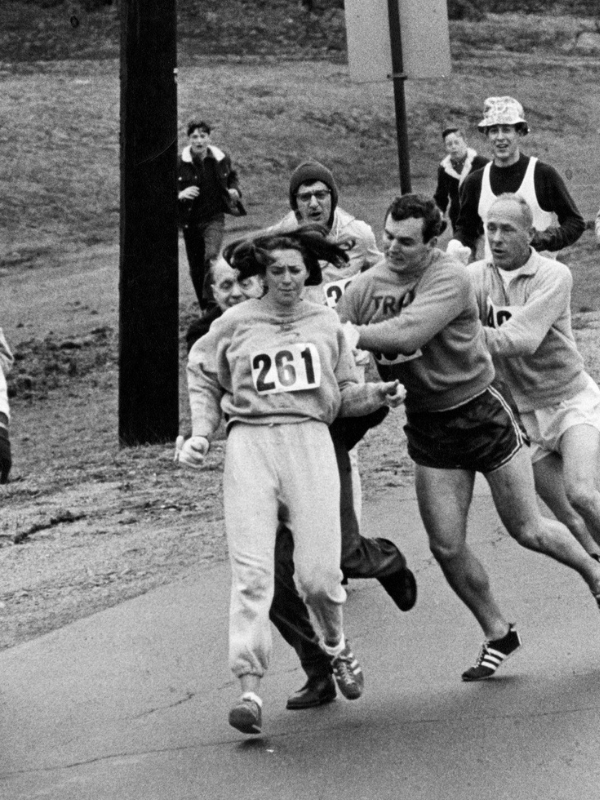Kathrine Switzer Changed Women’s History in 1967
 Does the name Kathrine Switzer ring a bell? If you lived in Boston in 1967, as I did, you may remember her as the 22-year-old woman who was given bib #261 after qualifying for the Boston Marathon. What officials didn’t know at the time was that KW Switzer was a woman.
Does the name Kathrine Switzer ring a bell? If you lived in Boston in 1967, as I did, you may remember her as the 22-year-old woman who was given bib #261 after qualifying for the Boston Marathon. What officials didn’t know at the time was that KW Switzer was a woman.
As the race progressed, word leaked out to the organizers, and one Jock Semple, race manager, jumped into Kathrine’s path, grabbed her by the arm, and tried to pull her out. It was only because of her also running boyfriend’s body block that Semple was deterred and Katrine finished the race in a little more than 4 hours and made history.
Does it seem ridiculous today to think this was a remarkable achievement? It may, but it was how it was back then. Before Title IX passed in 1972, girls were denied access to sports and the finances that supported them. It was pioneers like Kathrine Switzer for running and Billie Jean King for tennis that changed the course of history.
Today at 74 Kathrine runs and plays an active role in the US Senior Games. She was featured recently in USA Today and offered 10 tips for maintaining fitness which you can find through this link.
 As a lifelong wellness coach, I include fitness in my 5 Pillars of Lifelong Wellness. I like Kathrine’s approach to fitness in that she stresses the importance of doing something you enjoy, and doing something that keeps you fit. Women start to lose muscle mass somewhere in their 30s but this can be prevented if you exercise regularly and eat high-quality protein from fish, grass-fed beef, beans and lentils, low sugar yogurt, hummus, nuts and seeds, along with fresh fruits and vegetables. Limiting sugar is especially important for overall health, including your muscle and bone health.
As a lifelong wellness coach, I include fitness in my 5 Pillars of Lifelong Wellness. I like Kathrine’s approach to fitness in that she stresses the importance of doing something you enjoy, and doing something that keeps you fit. Women start to lose muscle mass somewhere in their 30s but this can be prevented if you exercise regularly and eat high-quality protein from fish, grass-fed beef, beans and lentils, low sugar yogurt, hummus, nuts and seeds, along with fresh fruits and vegetables. Limiting sugar is especially important for overall health, including your muscle and bone health.
How do you stay fit? Do you have a plan? If not, set some simple goals using the tips Kathrine provided. The important this is to start, and most of us do our best when we are realistic and avoid lofty goals that are very hard to achieve. Consider an activity that you enjoy and make a plan to make time for it at least 2-3 days a week. With my clients who choose to walk 30 minutes every day, I remind them it does not have to be all at once. It can be in 3 ten-minute increments, or 2 fifteen-minute walks. And if you need to skip a day, just get back out there the next day. Choose whatever way works for you so you are successful and will stay with it.






